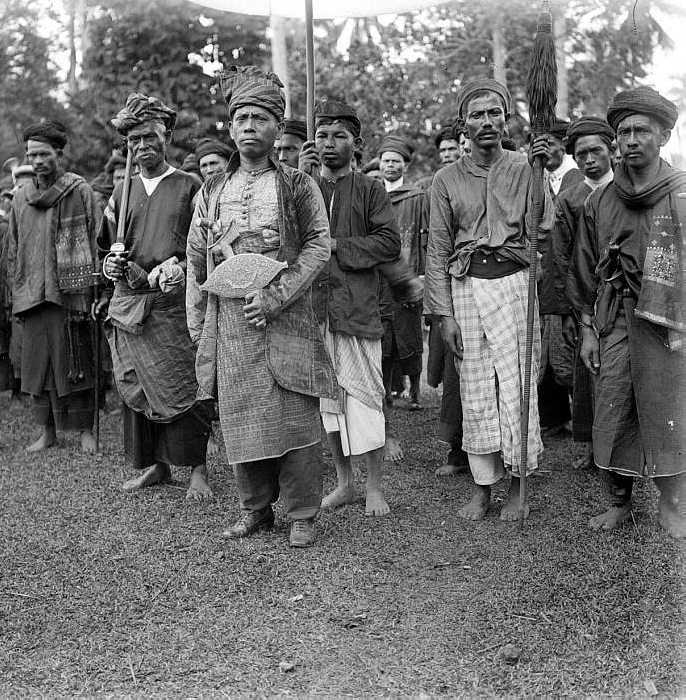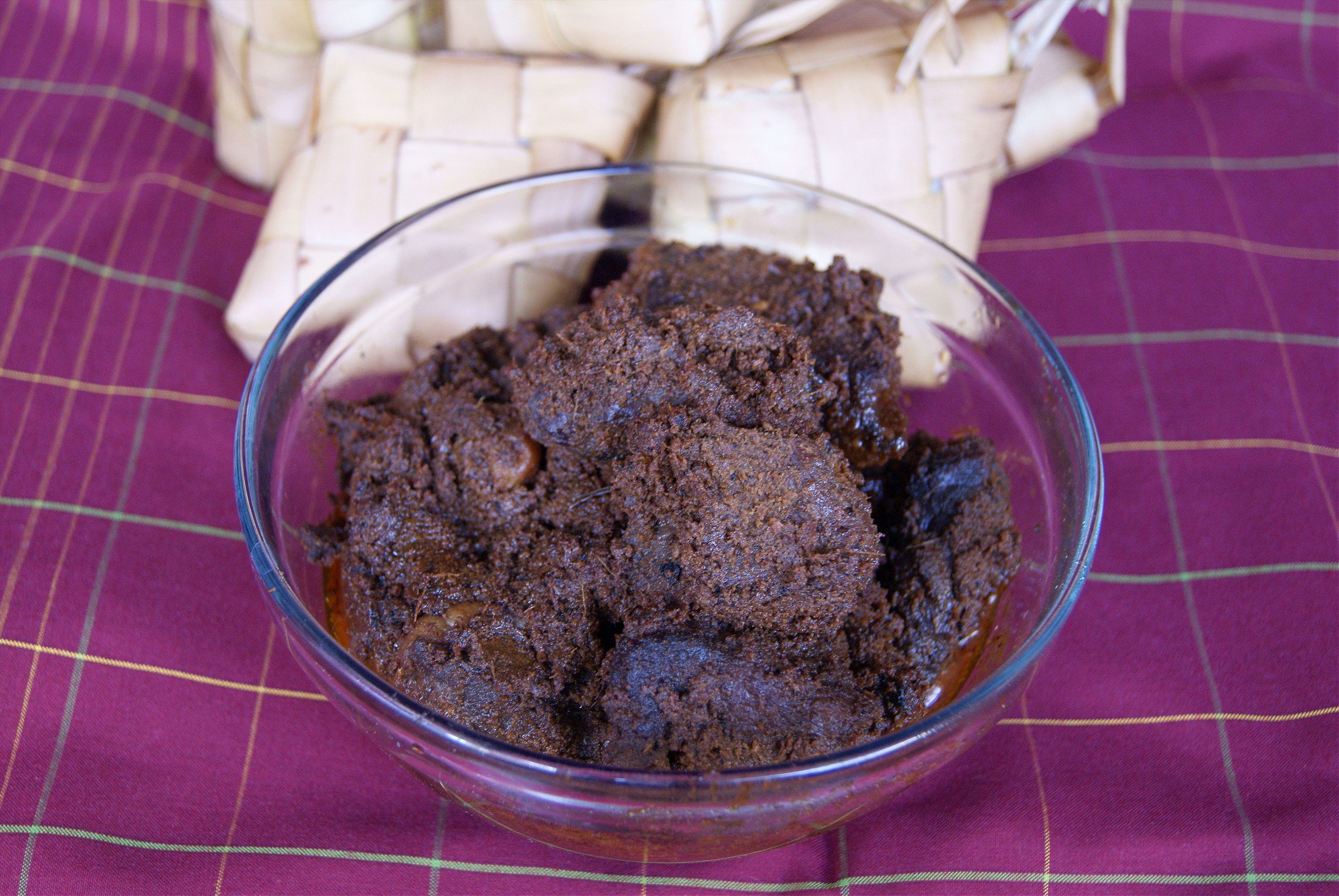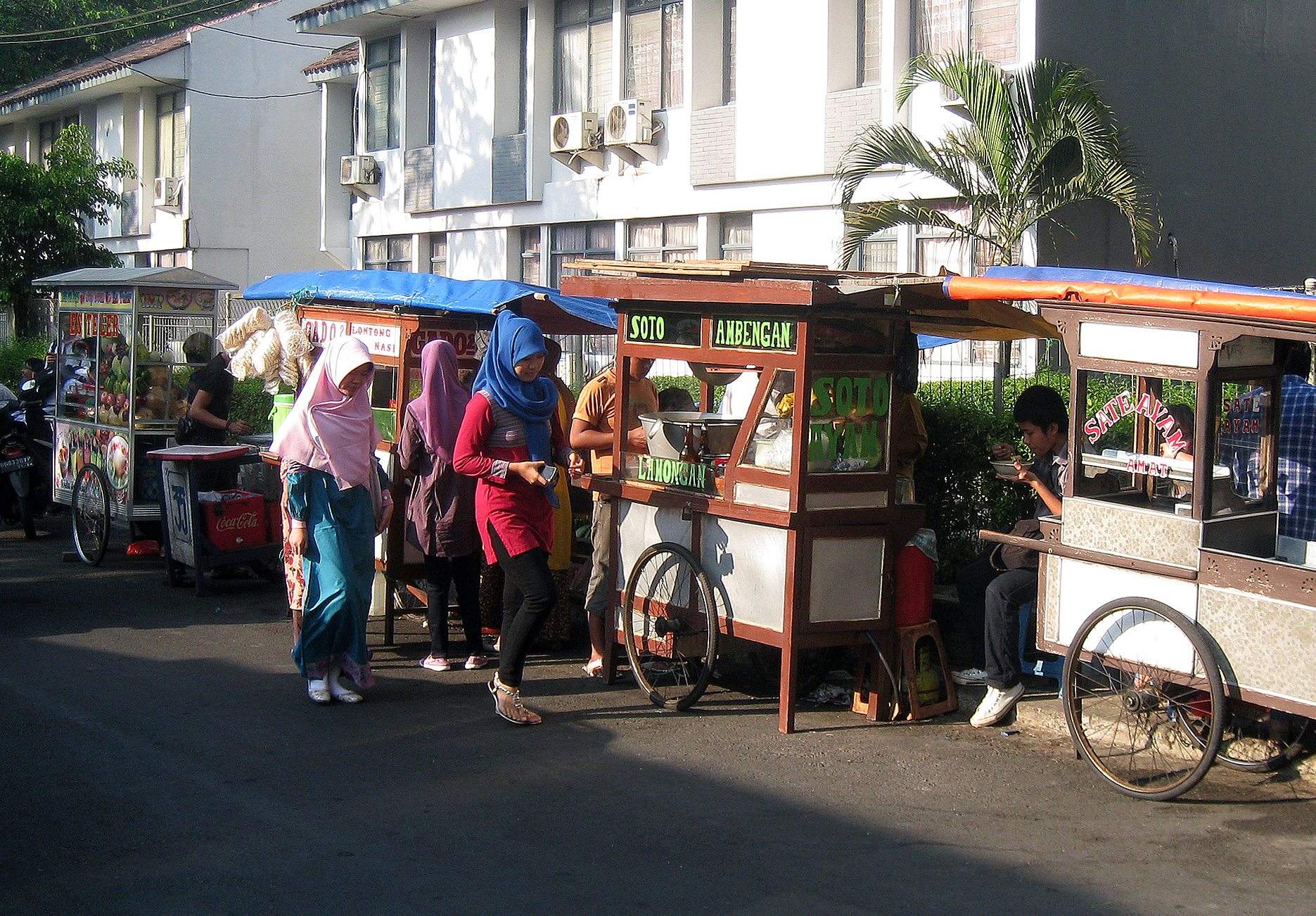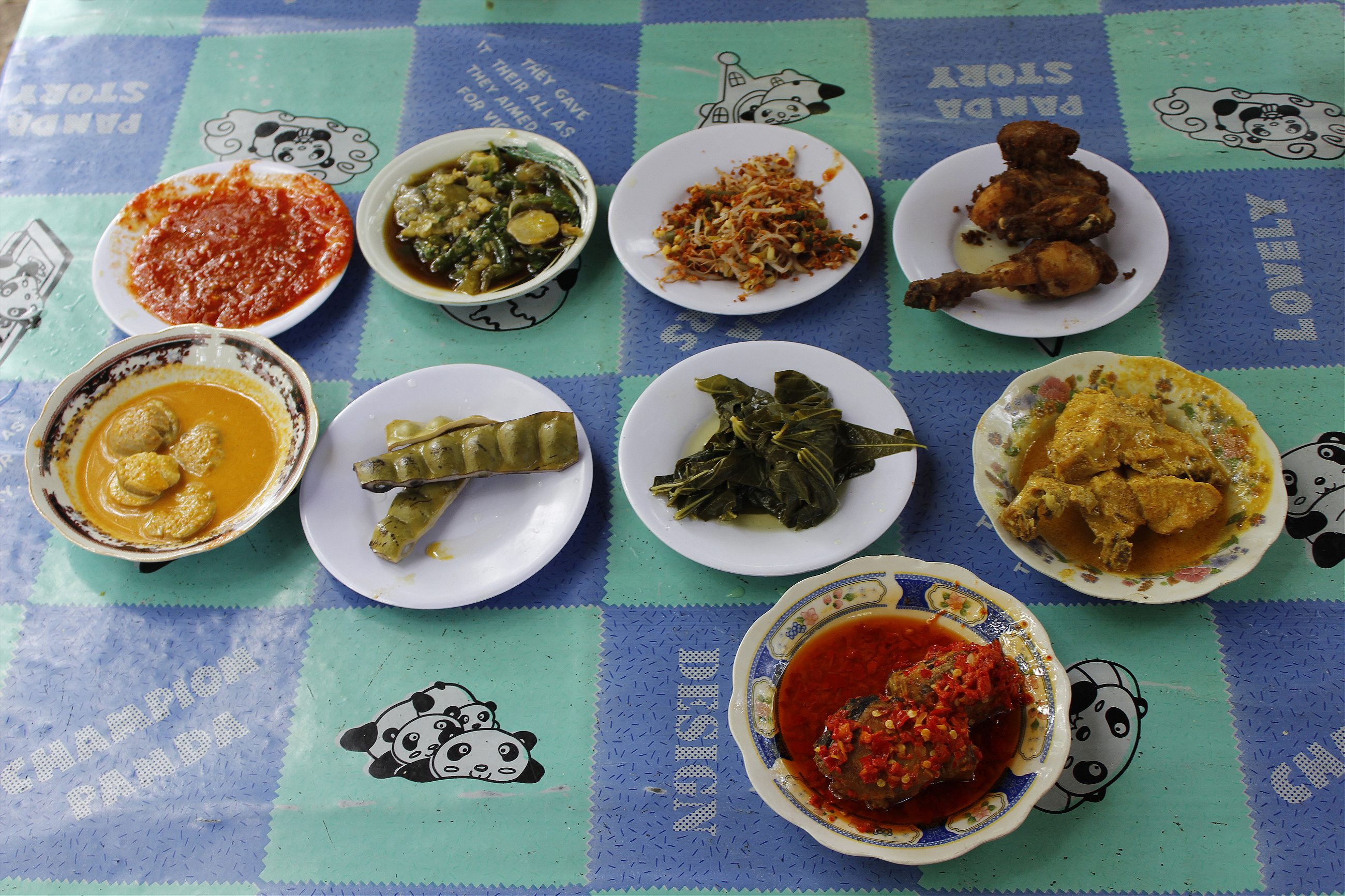The matrilineal Minangkabau people send their young men into the world to earn their fortunes and feed the world.
There’s a term for this place, not much employed in English anymore: Nusantara. To some, it refers to the territory of the Majapahit empire at its 14th-century zenith: a hundred maritime kingdoms under the throne in Java, stretching as far north as contemporary Thailand and the Philippines. Others broaden it to any and all territories with a population speaking a Malayan language, or narrow it to the Indonesian archipelago.
Taken literally, you might translate it as “the islands between,” or “the heartlands amidst” if you’re feeling twee. It reflects the region’s roots as a place of thalassocracies and entrepôts, sailors and traders: a hub for commerce and intercourse of all kinds between Arabs, Indians, Chinese, Europeans, and others. Today the more prosaic term Maritime Southeast Asia is preferred for the island nations between mainland Asia and Australia, distinguishing them from the cultures and concerns of their Indochinese neighbors.
But the idea of home as a negotiated space, physically and otherwise, still resonates in Nusantara. Shifting land rights, transplanted populations, and overlapping boundaries have made a topological marketplace of local geography, turning the meanings and usages of space into dynamic give-and-take processes rather than fixed values. In some cases, results are ugly: Malaysia’s political division along racial lines, or Indonesia’s problematic transmigrasi program of violently rewriting demographics. In others, they’re wonderfully messy integrations of languages, traditions, art forms, and food.

The Minangkabau of Western Sumatra may be more suited to this humming mélange of modernity than most. A matrilineal property system means many young men, cut off from housing, leave the community at an early age to accrue wealth, knowledge, and life experience. The tradition is known as merantau (“wandering”).
Similar to the Australian Aboriginal tradition of the walkabout, the merantau experience is part ritual and part practical, with an emphasis on education of the self and engagement with others that distinguishes perantauan (“wanderers”) from pure economic migrants. Young Minang men, (and, increasingly, women), gain experience that is meant to allow them to contribute not only as workers and entrepreneurs but also as civic leaders. Tunku Abdul Rahman and Yusof Ishak—the first prime minister of Malaysia and first president of Singapore, respectively— had Minang lineage, as did Mohammad Hatta, Indonesia’s first vice president. Personal growth through good works, and not at the expense of others, is (nominally) the pilgrim heart of merantau.

But the most visible signals of this wandering Minangkabau diaspora are not the faces of its people but the horns of their eateries. While the young men sent into the world to earn their fortunes and serve the community they join pursue many undertakings, one common path is to open a restaurant. Like a vertically mirrored counterpoint to those ubiquitous golden arches, a Minang restaurant advertises itself with a pair or more of upswept eaves, overlapped like curving antlers. A rumah masakan Padang (“house of Minang cuisine”), through architecture or logo, proudly announces a culinary cornucopia by showing off these “bulls’ horns” taken from an old Minangkabau legend. These iconic eaves have spread from their small corner of Indonesia until they are ubiquitous from the capital city of Jakarta to foreign capitals around the world.

Sumatran food is generally thick with chili, but not to the point that heat defines it. Instead, it’s mixed with coconut cream to varying viscosities, along with garlic, lemongrass, and ginger. Beans, sprouts, and leafy greens are often curried solo, rather than fried or mixed with meat as is done elsewhere in Indonesia. Traditional eateries will have thin brain or offal curries, while chicken is often available in a dozen styles. Minang food is particularly associated with beef, and their beef is associated with rendang.
Whether rendang’s fame is attributable to the far-flung reaches of masakan Padang (Minang cuisine), or to the simple fact that it’s a good eat, is for others to decide. The nation’s most famous dish feels simple, at first: another curry, this one centered on beef caramelized in coconut milk, then seared to finish. The sauce is reduced during the cooking process, leaving the chunks of meat with a dry exterior but moist and tender on the inside. It feels like chewing a thick wad of jerky-flavored chewing tobacco, but pleasant. Rendang, in the end, is just chunks of beef, stewed in gravy and chili and a desiccated coconut jelly; it is seemingly simple, but complex and delicious on the tongue.

You can find rendang in almost any Minang eatery, of which there are various iterations. The most prevalent are cheap and cheerful corner joints. As widespread as kebab shops in Europe or New York’s bodegas, and servicing a similar niche, a customer selects from assorted curry, sambal, fried meat, and vegetable dishes. It’s a rhythm familiar to anyone who’s ever attended the kind of dining establishment that features a bain-marie or window display: the food is generally cooked once a day—unless there’s a high turnover—and stashed behind a curtain or flyscreen (hopefully).
With a price tag that can reach below a dollar, and a side of rice included, this is a reasonably affordable meal for everyone from office workers to taxi drivers. That alone makes masakan Padang a worthwhile competitor to its alternatives in the same price range: kaki lima, the “five footed” mobile stalls that sit outside office buildings, bus stops, and anywhere else with a few square feet of open space. Picture a fleet of hot-dog carts overrunning a U.S. city, and you begin to get the idea.

Here in Jakarta, where slums and upscale shopping malls lie side by side, eating out can be a fact of life for rich and poor alike, and the cheap, low-tech kaki lima fill a gap they have for millenia, a sort of traditional fast food. But as has been seen with the proliferation of fast-food restaurants around the globe, the reliance on oil, salt, and saturated fats to create flavor has pushed both poor and rich into malnutrition. Close to 20 percent of Indonesians are overweight, the 10th highest rate in the world in absolute figures. Dangling off the other end of the scale are the third of the nation’s children who suffer from stunted growth and associated malnutrition disorders. But fast-food brands like McDonald’s, which can be prohibitively expensive in Indonesia, are less to blame than the kaki lima, which have provided the heavy treats. Masakan Padang, by contrast, is at least made with some raw, unprocessed ingredients and cooked with care, and can therefore be a welcome, low-cost alternative.
However, the real delight of a masakan Padang experience comes in a hidang (“waitservice”) restaurant. Hidang restaurants feature semi-formal table dining in which dozens of small dishes are laid out for the party to select from; the unwanted dishes are then removed. It’s something like a French service of dim sum, or a tapas bar without the alcohol: enormously conducive to conversation, convivial feeling, and blowing your Recommended Daily Intake in one sitting. Breaking the fast during Ramadan at a hidang restaurant, with a big group of friends picking dishes together, is a trip on a glycemic rollercoaster worth the price of admission.

Perhaps the most exciting incarnation of masakan Padang is in the spread of perantauan (wanderers on the merantau) to the world outside Nusantara. As Indonesians increasingly compete with Filipinos and Bangladeshis in the labor markets of Hong Kong and Saudi Arabia, and as a growing middle class studies and works in China and the U.S., they’re setting up their restaurants abroad, and often bringing something back.
The Suntiang restaurant chain in Jakarta is one example of pioneering new work done in this vein. The marriage of a Japanese conveyer belt-style sushi restaurant with a Minang eatery, Suntiang tackles two cuisines with strong, opposing flavors. Classics from Japanese and Minang cooking combine with perfect symmetry to form dishes such as edamame balado—salted soy beans with spicy red sambal—or a creamy rendang sushi roll. Others—like gulai ramen or a dragon balado roll—smash flavors together like unstable atoms, randomly fusing chili with a mustardy cheese sauce, or a coconut curry karaage (a Japanese deep-frying technique).
It largely works, though with degrees of success; but while the food at Suntiang is worthwhile in and of itself, the most exciting aspect is the attempt at a combination of old and new. The chain is undergoing rapid growth: three outlets in 24 months, not bad even in chain-crazy Jakarta. This is the kind of restaurant that could sit as comfortably in Japan’s Harajuku as it does in Jakarta; one that could gently shock London or New York with the pleasant thrill of the experimental.
After the stiflingly standstill decades of Suharto’s New Order nationalism, Indonesia is finally engaging earnestly with the world’s economies, and with its own history. It’s an era of both forward momentum and introspection. The Minangkabau already know this road well: they’ve made a culture and a cuisine out of venturing into the unknown, in the process building stronger networks and better selves. If Indonesia’s progress is going to churn on anything more than its own populace, and if that populace is going to feed on anything more than palm oil and refined sugar, and if the rest of us are going to engage with that journey beyond Bintang and Bali, a plate of rendang might be good fuel for the way ahead.